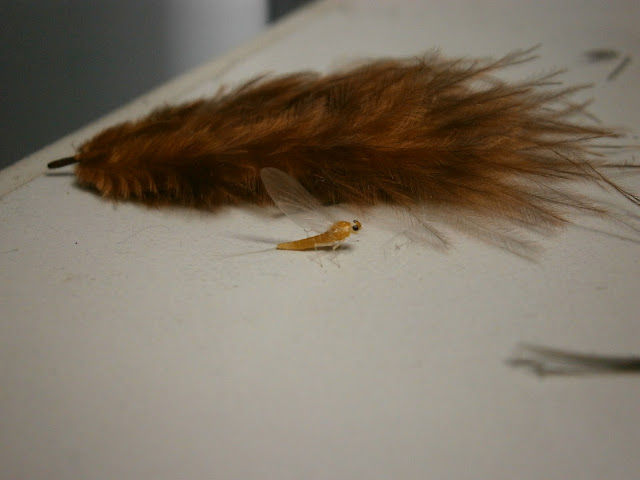I have been hooked lately on tying using Davie Mcphails spider technique as a base model. It makes some really nice ties such as the jungle spider, but I have been doing it with all sorts of feathers and different bodies, tags, ribs, you name it. You can see Jungle spider tutorial
here for an understanding on how to do this. You can also check out Davie's video
here. Ok so here are some patterns I have put together and some I have fished with some good catches.
Hook- Alec Jackson soft hackle hook #9
Thread- Uni 8/0 black
Body- Sparse otter dub
Rib- montana fly co, midge body thread, rust.
Tag- Red holographic tinsel
Wing- India grizzly hen
Hackle- India grizzly hen
I gave the rusty indian a go on my local spring, I picked up a couple of browns, but the trout quickly became in tuned to a bwo spinner fall. So i swapped out for a rusty spinner. I will be fishing this fly a lot more. If your unsure where to score india hen capes try
here and get free shipping to boot. Be sure tell Dave Johnny sent ya.
Hook- Alec Jackson soft hackle #11
Thread- Uni black 8/0
Tag- Utc sparkle braid midge, peacock
Rib- fine silver wire
Body- Sparse beaver dub
Wing- Badger
Hackle- Badger
Hook- Alec Jackson Soft hackle- #9
Thread- Uni 8/0 black
Tag- Small lagartun gold tinsel
Rib- Small Lagartun gold tinel(same piece as tag)
Body- *india bronze* peacock This hurl has no green to it, only copper and bronze tones.
Wing- pale furnace(greenwells) hen
Hackle- pale furnace(greenwells) hen
I have used this fly several times on the Saucan creek in Pa. It is a limestone spring creek, with gin clear water and finicky brown trout. I will just say it got me "more than four" each time. I was gonna keep a secret but what fun is that? I fished it in the film and got some really nice browns with it. I have been fishing quite a bit, but just havnt been posting reports or taking many pictures. But what is a post without fish porn.
Just a couple of browns taken with the saucan secret. The gelatinous one in the middle missed it on its first strike and chased it down and slammed it. That one and the others put up a great fight on my 2wt. If you like the alec jackson hooks contact j.w.trout and you can score them for a good price. Be sure to tell'em Johnny sent ya.
















































